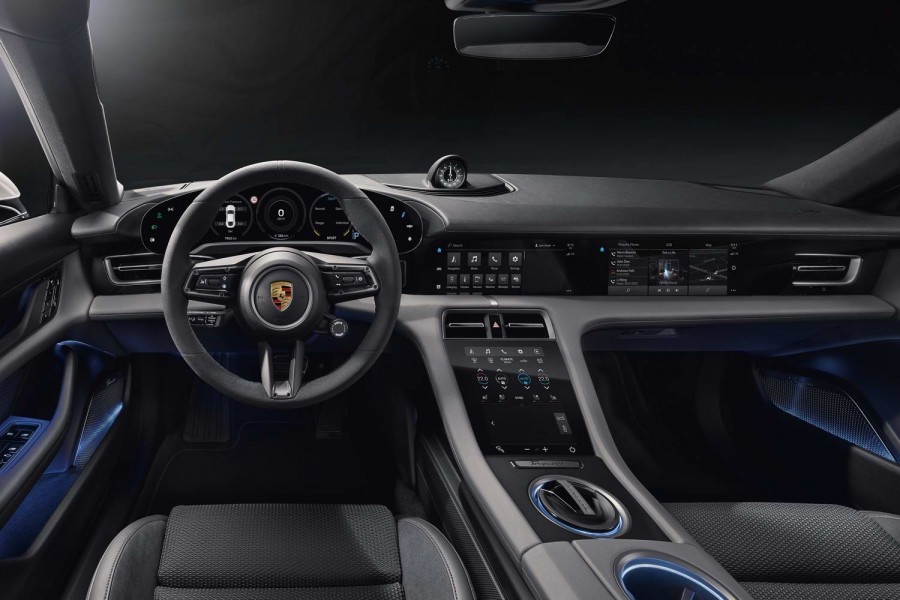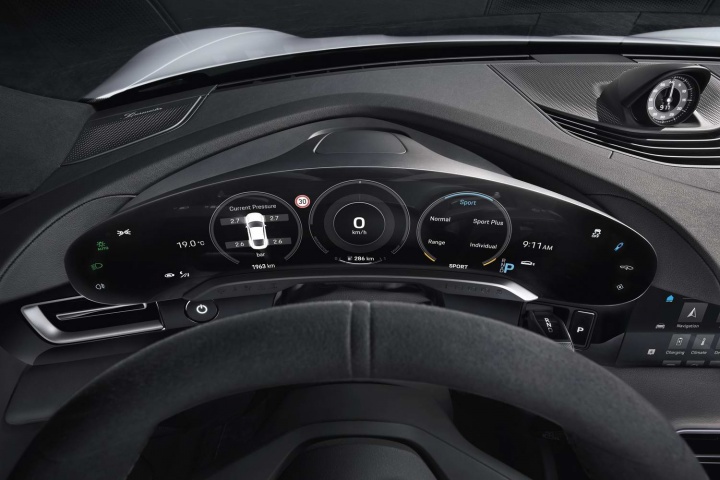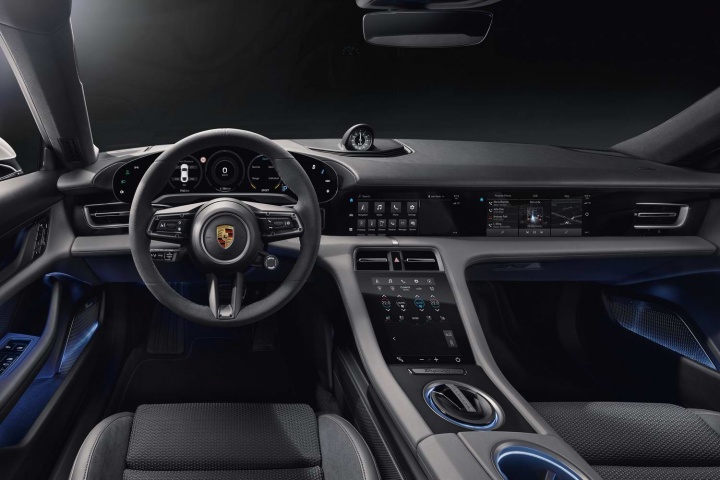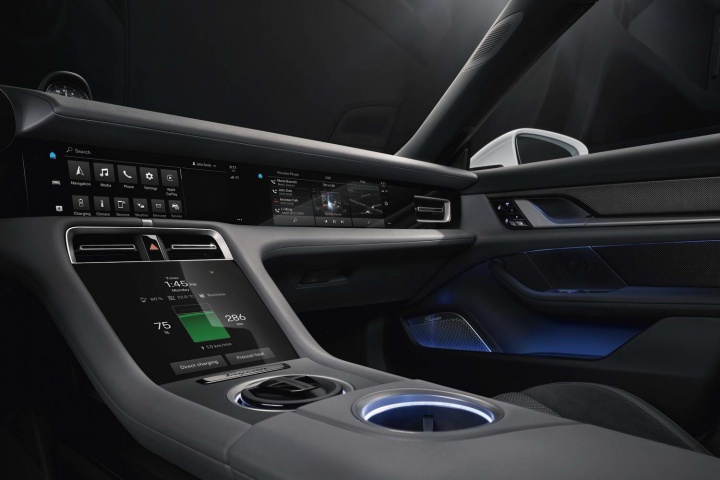We all know that Porsche's first-ever fully electric vehicle, the Taycan, is on the way, and we've been invited to a sneak preview of the car's interior layout. Here are the details.
Cowl-less cluster
Structurally, much of what you can see with the Taycan's fascia is familiar Porsche; it uses the same cues as the current production line-ups, with the company admitting its role model here is, of course, the 911. So the big EV has a driver-focused cockpit, a low and sporty seating position and an unusual instrument panel in which the cluster is the highest point going on the whole dash - you'll also notice that freestanding cluster has no cowl to protect it; more on that shortly.
More hallmarks of the Taycan's cabin are hardly any physical buttons (again, more to follow...) and an unobtrusive design that also leads to some special air vents... and yes, we'll come onto those in a moment, as they're all part of the digital experience of the Porsche EV. Otherwise, on the physical front, there's a storage area created behind the lower touchscreen of the centre stack, there will be two types of steering wheel (regular design and a GT Sport upgrade), three types of seat (standard, Comfort and Sport), the use of plenty of sustainable materials like Paldao wood and Alea biologically tanned leather, and also the men's-shaving-razor-type stubby little gear lever from the 992-generation Porsche 911, only mounted vertically next to the steering wheel.
'Less is always faster'
So that covers the things that are in the analogue world. Time to hand over to Miriam Mohamad, who is the manager of User Interfaces for the Taycan, to explain the EV's highly digital cabin. She says that the reason it is so electronic within is that the driver experience is defined by 'less is always faster'; this means lots of gauges and instruments are digitised.
Let's start with that cluster. It replicates the five-dial layout of the current product line-up but here, unlike on the extant Porsche range, it's a one-piece, curved affair that lacks for a central analogue rev counter (given the Taycan obviously doesn't have an internal combustion engine that generates measurable revs). Measuring 16.8 inches, the TFT screen has curved glass with a special coating - because the cluster lacks for a cowl, it has to be both legible in bright sunlight and also not reflect up onto the windscreen at night.
All active elements on the cluster, and on other screens, are highlighted in light blue. The display can be personalised and has various different view modes, including a rather Saab-esque Night Panel-type one that only shows the Taycan's speed, but even the headlight functions and the chassis controls are on the cluster - the lights are arrayed down the left of the screen, the suspension settings and so on down the right.
Electronic air vents
Moving centrally, there's a 10.9-inch central touchscreen, which has control of all of the Taycan's apps from one configurable home screen, complete with a tile array of graphics, and a lower 8.4-inch for the climate controls. This is where the air vents come into play. Look at them closely and you will notice that they have no slats and none of the usual physical adjustment controls you'd expect, to direct the airflow to where you want it; instead, internal motors control flaps deep within the vents to direct the airflow into the passenger compartment, and these motors are controlled by a neat graphic on the 8.4-inch screen. There's even a 'blank' area at the bottom of this lower panel, which is a touchpad-style controller for the 10.9-inch main display above.
Further features of the main infotainment on the Taycan include the Notification Centre, which bundles all of the car's warning messages, text messages from the phone, live traffic announcements and available software updates into one place for the driver - and a new map design for the satnav with, as already mentioned, real-time traffic data. Naturally, as a thoroughly modern German machine, the natural language recognition Voice Control is activated by saying 'Hey Porsche' to the car.
Passenger gets their own screen... optionally
What with the cluster, the infotainment screen and the climate controls, there are already three touchscreens in play. But there's the option to have a fourth, which is a 10.9-inch display in the passenger's side of the dashboard. This can do almost everything the central screen can do, although it is shorn of functions that control the chassis (suspension and drive modes, for example). It can, however, show the car's current speed and details of the trip from the navigation system, while it obviously has all the connectivity features the Taycan possesses.
Mohamad further adds that the EV has wireless charging for smartphones in the central armrest, while it supports Apple CarPlay... but NOT Android Auto, as (apparently) 80 per cent and more of Porsche owners worldwide are Apple users. CarPlay will be USB-enabled only from launch, although Mohamad says Bluetooth connectivity of the system will be on the cards; as, potentially, will a head-up display for the driver. Add in the fifth (if the passenger display is optioned in) digital screen at launch for the Taycan, which is a non-touch sensitive digital display in the back for the rear-seat passengers' climate functions, and you can see that there's a lot of digital loveliness in the Porsche EV.




